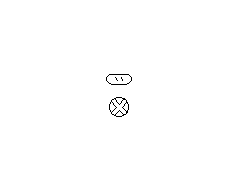
The Greek name for the ancient Egyptian town of Nekhen, situated on the west bank of the Nile in the 3rd Upper Egyptian nome, about 80 kilometres south of Luxor. In prehistoric times Nekhen and Nekheb (Elkab), situated opposite on the east bank of the Nile, together formed the capital of Upper Egypt. The Greek name means 'Town of the Falcon'. The god of Hierakonpolis, 'Horus of Nekhen', was indeed depicted as a falcon with two tall feathers on its head. Very early on this god was connected with other forms of Horus, but he is also associated with the god Shu. According to a spell in the Book of the Dead, the hands of Horus were worshipped as relics in Hierakonpolis. The town was founded in prehistoric times. Excavations have revealed parts of an early dynastic temple and many ceremonial objects, including the famous Narmer palette (now in the Egyptian Museum in Cairo). A tomb from the Gerzian or Naqada II period (3,500 - 3,100 BC) has been found with wall paintings of warriors, wild animals and boats. This is the oldest decorated tomb yet found in Egypt.